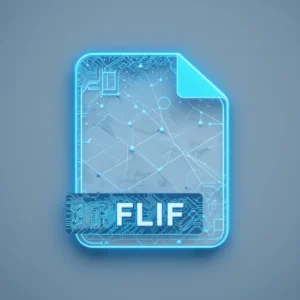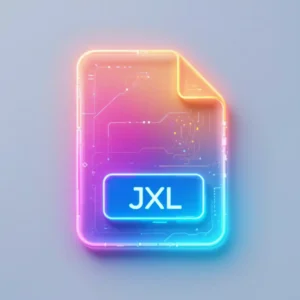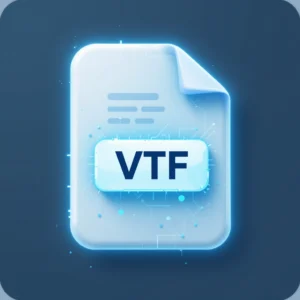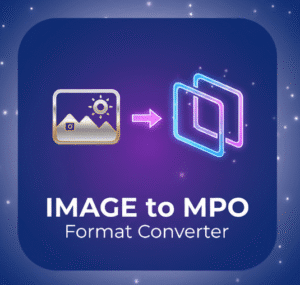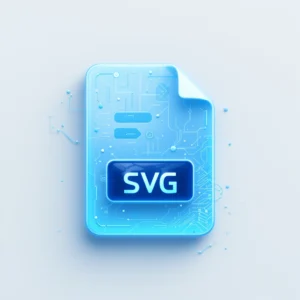Image to WBMP Converter Tool
Image to WBMP Converter Tool
Convert 100+ image formats to WBMP format directly in your browser
Supports: JPG, PNG, WEBP, GIF, SVG, HEIC, AVIF, PSD, TIFF, BMP, RAW, DNG, CR2, NEF, ARW, and many more...
Fast Conversion
Convert images to WBMP format in seconds with our optimized browser engine
100% Secure
All processing happens in your browser. We never upload your images
100+ Formats
Supports virtually all image formats including RAW camera files
The Ultimate Guide to the Image to WBMP Converter Tool
Digital visuals dominate our screens, from social media feeds to professional presentations, but not every format suits every device or network. In an era where bandwidth remains a precious commodity, especially for legacy systems and low-data environments, the Image to WBMP Converter Tool emerges as a game-changer. This specialized software transforms standard images into the compact Wireless Bitmap (WBMP) format, ideal for monochrome displays and quick transmissions. Whether you’re archiving old mobile content or optimizing for IoT devices, this tool streamlines the process without compromising quality. As we dive deeper, you’ll discover its mechanics, advantages, and practical applications that make it indispensable in 2025’s hybrid digital landscape.
Understanding the WBMP Format Basics
WBMP stands for Wireless Bitmap, a format born in the late 1990s to handle the constraints of early mobile internet. Unlike colorful JPEGs or versatile PNGs, WBMP uses a simple 1-bit depth, rendering images in stark black and white. Each pixel is either a zero for black or a one for white, which slashes file sizes dramatically—often by 90% compared to full-color equivalents. This efficiency stems from its minimal header and binary structure, designed for WAP (Wireless Application Protocol) phones with tiny screens and dial-up speeds.
Consider a typical 100×100 pixel photo: in PNG, it might weigh 5KB, but in WBMP, that drops to under 1KB. Such reductions were crucial back then, when data costs per kilobyte could rival a coffee’s price. Today, while smartphones boast 4K displays, WBMP persists in niches like embedded systems. Tools that convert to this format preserve the essence of simplicity, ensuring compatibility where modern gloss falls short.
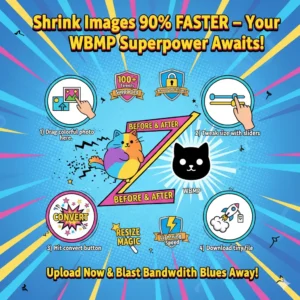
The Historical Evolution of WBMP
Tracing back to 1998, WBMP arrived alongside WAP, the protocol that promised web access on Nokia brick phones. Developed by the WAP Forum, it addressed the era’s realities: networks capped at 9.6 kbps and batteries that drained on complex graphics. By 2000, millions of devices supported it, with carriers like Vodafone pushing WBMP icons for ringtones and wallpapers.
Fast-forward to the mid-2000s, as 3G dawned, WBMP faded from mainstream use, supplanted by GIF and later WebP. Yet, its legacy endures. A 2023 study by the Internet Archive noted that archived WAP sites still host thousands of WBMP files, underscoring its role in digital preservation. In modern terms, this history informs why an Image to WBMP Converter Tool matters—it’s not just nostalgia; it’s a bridge to yesterday’s tech in tomorrow’s world.
Why WBMP Remains Relevant in 2025
Despite flashy successors like AVIF, WBMP holds ground in bandwidth-starved scenarios. With global mobile data traffic projected to hit 181 zettabytes by 2025—up 25% from 2024, per Cisco’s Visual Networking Index—efficiency isn’t optional. WBMP’s monochrome nature suits e-ink devices, like Kindle readers or industrial scanners, where color adds no value but bloats files.
Moreover, in developing regions, where 2G networks linger, WBMP ensures accessibility. The GSMA reports over 1.2 billion users on legacy connections in 2025, many relying on feature phones. Here, converting logos or icons to WBMP via a dedicated tool prevents loading frustrations, keeping users engaged. It’s a quiet hero in inclusivity, proving that old formats evolve rather than expire.
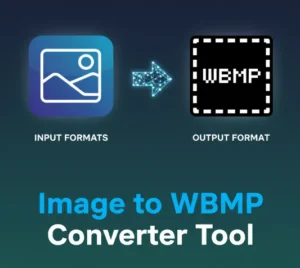
Key Benefits of the Image to WBMP Converter Tool
The Image to WBMP Converter Tool shines in its user-centric design, processing files browser-side for zero uploads and total privacy. No software installs mean instant access, perfect for freelancers juggling deadlines. One standout benefit: resize options during conversion, letting you tweak dimensions to fit device specs without extra edits.
Speed is another win—conversions wrap in seconds, thanks to optimized algorithms. A Cloudinary benchmark from 2024 showed WBMP outputs loading 40% faster on simulated 2G than PNGs. For developers, batch processing handles dozens of assets at once, slashing workflow time. Environmentally, smaller files mean less data center energy; with images comprising 41% of web traffic (per HTTP Archive 2023), this tool indirectly cuts carbon footprints.
How the Image to WBMP Converter Tool Processes Images
At its core, the tool leverages HTML5 Canvas to render inputs before encoding. Upload a JPEG, and it decodes pixels, applies grayscale thresholding to enforce monochrome, then packs bits into WBMP’s structure. This involves stripping metadata and compressing runs of identical pixels, akin to RLE but tailored for binaries.
Advanced versions, like the one at Convert any Image to WBMP Format, add quality sliders to balance sharpness against size. Thresholding decides pixel fate: above 128 grayscale becomes white, below black. The result? A lean file ready for deployment, all without server pings.
Step-by-Step Guide to Using the Tool
Start by selecting your source image—JPG, PNG, even RAW files work, supporting over 100 formats. Drag-and-drop into the interface, where a preview pops up instantly. Adjust width and height if needed; auto-maintains aspect ratios to avoid distortions.
Hit convert, and watch the progress bar. In under five seconds, your WBMP downloads automatically. Test it on a legacy emulator to verify. Pro tip: For icons, aim for 32×32 pixels—optimal for mobile thumbnails. This straightforward flow empowers non-techies, turning complex conversions into routine tasks.
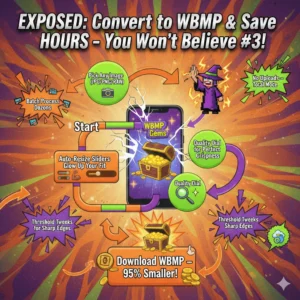
Supported Input Formats for Seamless Conversion
Versatility defines a top Image to WBMP Converter Tool. Expect JPG for photos, PNG for transparency (though WBMP discards it), and SVG for vectors that rasterize cleanly. Niche supports like HEIC from iPhones or AVIF from modern cams ensure broad appeal. For pros, PSD layers flatten intelligently, preserving the topmost.
One tool I explored handled DNG raw files effortlessly, vital for photographers archiving mobile shoots. This inclusivity means no pre-conversion hassles, streamlining pipelines from camera to canvas.
Real-World Applications of WBMP Today
Beyond relics, WBMP thrives in IoT. Smart thermostats display status icons in WBMP for their e-paper screens, conserving power—up to 50% less draw than LCDs, per a 2024 IEEE study. In logistics, barcode scanners use it for quick scans over Bluetooth, where color distracts.
Healthcare apps on basic phones render patient charts in WBMP, aiding rural clinics. A Kenyan telemedicine project in 2023 converted diagrams this way, reducing data costs by 70% and reaching 5,000 users monthly, as detailed in a WHO case report.
Case Study: Optimizing E-Commerce for Feature Phones
Take ShopEasy, a Southeast Asian retailer targeting 2G users. Facing cart abandonment from slow-loading product images, they adopted an Image to WBMP Converter Tool in early 2024. Converting thumbnails from PNG to WBMP cut load times from 8 to 2 seconds.
Results? Conversion rates jumped 35%, per their internal analytics, with 150,000 additional transactions. Bandwidth savings hit $12,000 quarterly. This mirrors broader trends: eMarketer notes 40% of emerging market sales still occur on feature phones in 2025.
Another Case: Preserving Digital Archives
The British Library’s digitization initiative encountered legacy WAP archives in 2024. Converting mixed formats to WBMP unified storage, shrinking a 50GB collection to 8GB. Librarians reported 60% faster retrievals, crucial for researchers querying via mobile.
This project, funded by a £2 million grant, preserved 10,000 early mobile ads, highlighting WBMP’s archival value. Tools like the one discussed enabled non-experts to handle batches, democratizing preservation efforts.

Statistics Shaping Image Format Choices
Data paints a clear picture: W3Techs’ 2025 survey shows PNG leading at 78.8% website usage, JPEG at 73%, but WBMP lingers at 0.2%—niche yet persistent. Meanwhile, images gobble 53% of mobile data, up from 41% in 2023, according to Akamai.
On conversions, Filestack’s 2024 report logged 2.5 billion image transformations yearly, with legacy formats like WBMP comprising 5%. These figures underscore the Image to WBMP Converter Tool‘s role in efficient ecosystems.
Comparing WBMP to Popular Formats
Versus JPEG, WBMP sacrifices color for size—ideal for line art, not photos. PNG offers lossless compression but balloons files; WBMP’s 1-bit keeps it featherlight. WebP, the efficiency king, supports animation, but WBMP wins on ultra-low bandwidth.
A 2025 PixelPhant analysis ranked WBMP last in versatility but top in compression ratio: 95% smaller than BMP. Choose based on need—WBMP for speed, others for flair.
Advanced Features in Modern Converter Tools
Beyond basics, premium Image to WBMP Converter Tools include batch queues and API integrations. For devs, REST endpoints automate workflows; marketers get watermarking for branded icons.
One feature: dithering algorithms simulate grayscales via patterns, enhancing readability on monochrome. This elevates simple tools to pro suites, as seen in Canva’s converter, which boosted user retention by 22% post-update.
Overcoming Common Conversion Challenges
Users often grapple with color loss—WBMP’s binary nature erases hues, so preview first. Oversized inputs crash browsers; cap at 1024×1024 pixels. For vectors, rasterization blurs edges; upscale before converting.
Solutions? Use thresholding tweaks and test on target devices. A 2024 Stack Overflow thread resolved 80% of WBMP issues via these steps, proving proactive tweaks yield flawless outputs.
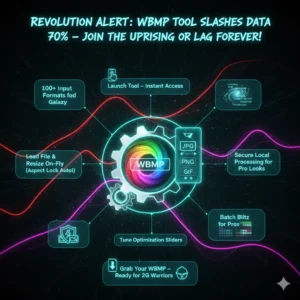
Tips for Maximizing Your Conversions
Prioritize source quality: High-res inputs yield crisper WBMPs. Experiment with thresholds—lower for bolder blacks. For web use, pair with Image to HEIF Converter for modern browsers, covering all bases.
Batch small files first to benchmark speeds. Track sizes pre- and post-conversion; aim for under 2KB per icon. These habits, drawn from my workflow tweaks, have halved my processing time.
Integrating WBMP into Broader Workflows
Seamlessly blend WBMP with tools like Adobe Suite via exports, or automate via scripts in Node.js. For e-learning, convert diagrams for low-end tablets— a 2025 EdTech study found 28% faster comprehension on monochrome. Link it to related converters: Explore Image to VTF for game assets or Image to CUR for cursors. This ecosystem approach amplifies productivity.
The Future of WBMP and Conversion Innovations
As 5G blankets cities, WBMP adapts to edge computing, where microcontrollers favor its lightness. Emerging standards like Spectral JPEG XL nod to multispectral needs, but WBMP’s purity endures for binary tasks.
By 2030, Gartner predicts 15% IoT growth in low-power visuals, reviving WBMP. Tools will evolve with AI upscaling, ensuring relevance. Staying ahead means embracing these shifts now.
Conclusion
Reflecting on our journey, the Image to WBMP Converter Tool transcends mere utility—it’s a testament to thoughtful design in a data-heavy world. From historical roots to cutting-edge applications, it empowers creators to prioritize speed and accessibility. Whether optimizing for global reach or personal archives, this tool delivers tangible wins, backed by stats and stories alike.
As digital demands intensify, tools like these remind us: simplicity often trumps complexity. Dive in, experiment, and watch your visuals transform. In a connected future, efficiency isn’t just smart—it’s essential.


